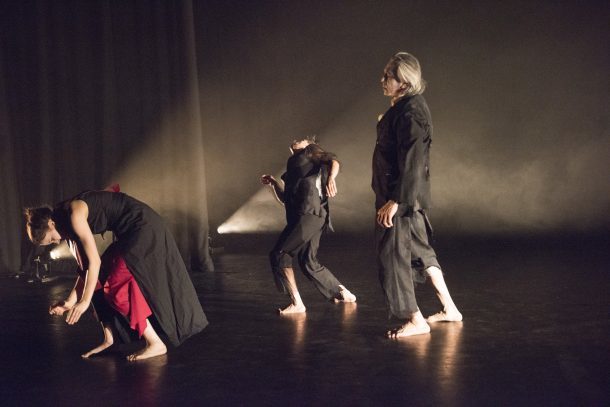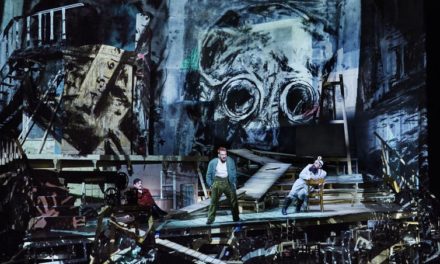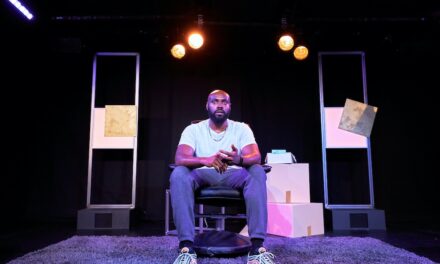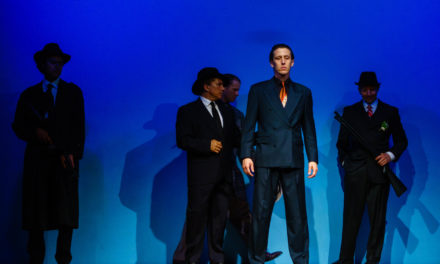Vancouver, British Columbia
Annie Smith review’s Circadia Indigena’s Greed/REsolve, a contemporary dance piece in two acts devised collaboratively by the inter-Nation collective:
By the end of Circadia Indigena’s Greed/REsolve, I felt as though I had been assaulted by an icy ocean wave. Once I had let the effects of the pummeling of the icy water subside I felt renewed, invigorated–and scoured by sand. Going into the performance I hadn’t been able to wrap my head around the program description printed in the Talking Stick Festival’s brochure. After the performance, listening to the dancers at the Q&A, I began to understand some of the power I felt and with which I was still resonating.
Greed/REsolve is a contemporary dance performance of two separately developed pieces that inform each other in an uneasy symbiosis. Watching the performance it is difficult to separate the halves, to see where one piece becomes the other. Circadia Indigena–Indigenous Arts Collective explores contemporary issues through sound, lighting, video, and theatrical effect as well as choreographed movement.
The sensory assault is visual and aural. The soundtrack, assembled from a variety of sources from pop to classical to unsettling sound effects, sometimes leads the movement and sometimes supports it. Visually, there is live video of the performance projected on the black curtains of the backdrop, in multiple frames. The lighting follows the dancers, highlighting pieces of bodies and obscuring them in turn. At times the dancers shout words in English, Spanish, and Indigenous languages, bringing the percussive sound produced by their bodies into the choreography. Above all, it is the physical and emotional commitment of Indigenous bodies expressing the themes of the piece–the greed of contemporary Western culture and the awakening of remorse to compel us to decolonize ourselves, the land, and the biosphere–that carries the most power.
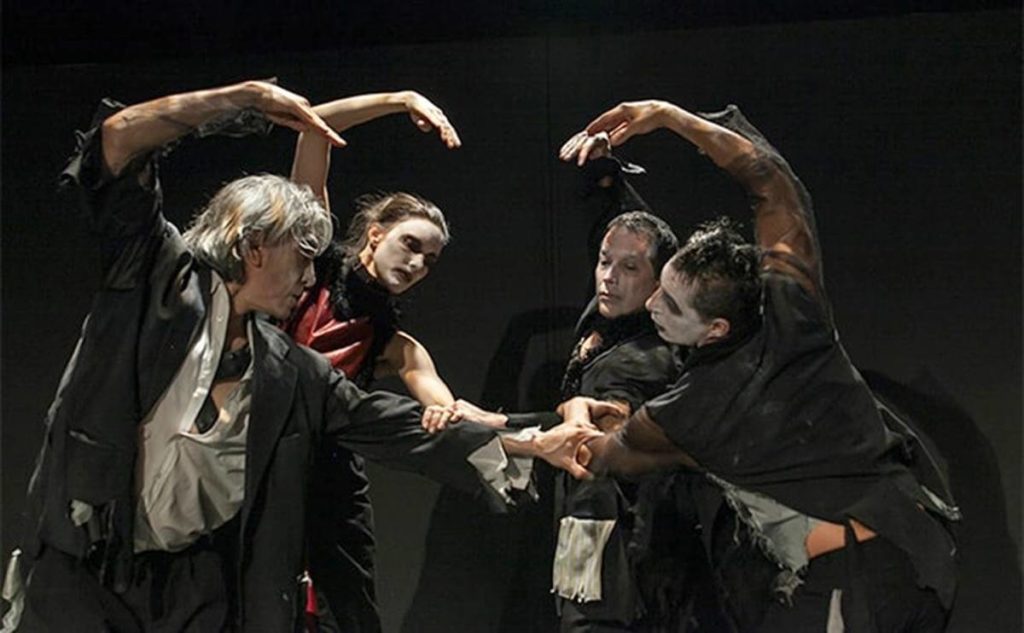
Photo by Circadia Indigena
Greed portrays the driven competitiveness of the stock market and the allure of money and is expressed by the repetitive picking of empty pockets and the slow motion tumbling of the dancers. Remorse is a more complex emotion to portray: REsolve–the individual’s journey to internal peace–is meant to lead to the resolve to protect the planet...It is here, possibly, that the cultural differences between the Indigenous performers and the largely white, older audience, is felt. I found myself emotionally caught in the cycle of greed and remorse, unable to reach a place of inner resolve.
The piece’s structure is jazz-like with each dancer taking on solo roles supported by the ensemble of four. Sometimes this support is in contest with the solo performer; sometimes the solo dancer is alone but the remaining dancers are always physically engaged, holding the space through peripheral movement. At one moment, as Olivia C. Davies struggles to free herself from the allure of greed, the other dancers are rolling and creeping around the periphery of the floor in a counter-clockwise movement as if building their energy and focus for a fresh assault on whichever dancer next moves into contested space to be grappled physically and emotionally.
The inspiration of the work is drawn from the Blackfoot stories of the hero, Kutoyis, who came to rid the People of oppressors. Kutoyis is canny and observant and challenges and defeats the forces that hold the people captive. The forces today that need to be challenged are the colonial attitudes and corporate greed that are killing our planet. Circadia Indigena transcribes the struggles to decolonize and confront the force of greed on their own bodies in this visceral performance.
Circadia Indigena’s artists worked collaboratively to develop the full-length Greed/REsolve, utilizing inter-Nation dance styles and contemporary fusion dance. Greed began as a ten-minute piece performed by two male dancers as part of the 10x10x10 Dance and Music event held at the Scotia Bank Dance Centre in Vancouver in 2011. Choreographed and performed by Byron Chief-Moon to the music Triple Witching by Jeffery Ryan, it scores a time in the stock market when millions can be won or lost, when greed and remorse circle each other.
The company consists of Luis G. Canton, of mixed ancestry from Yucatan, Mexico; Byron Chief-Moon, Niitsitapii, of the Fish-eater’s Clan of the Blackfoot Confederacy in southern Alberta; Olivia C. Davies, co-founder of MataDanze Collective in Toronto; and JP Longboat, Mohawk, of the Turtle Clan from Six Nations in Southern Ontario. The videographer is Damien Eagle Bear of the Kainai Nation. Each artist has their own individual dance practice as well as being members of the collective. The company’s structure is modeled on Indigenous ways of working through consensus and community as opposed to a traditional European artistic hierarchical structure.
My emotional response to Greed/REsolve comes from my visceral–literally at the gut level–response to the breath, voice, and movement of four dancers who do not stint their engagement with each other in creation and performance. Their commitment invites the audience to engage with complex visual and sound imagery far beyond what one might usually find at a dance performance.
This post originally appeared on Alt Theatre on November 25, 2017, and has been reposted with permission.
This post was written by the author in their personal capacity.The opinions expressed in this article are the author’s own and do not reflect the view of The Theatre Times, their staff or collaborators.
This post was written by Annie Smith.
The views expressed here belong to the author and do not necessarily reflect our views and opinions.

